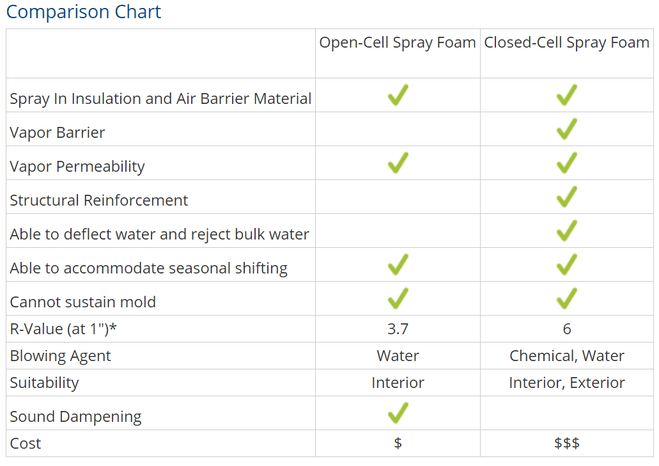Advantages of open and closed-cell spray insulation in residential applications

Open-cell spray foam insulation
is a spray-applied, half pound density, non-structural, thermal insulation material used in wall cavities, floor assemblies, ceiling assemblies and in attic applications. Open-cell foam insulation is a performance upgrade over conventional insulation that leads to energy efficiency, improved occupant comfort, a cleaner indoor environment and greater noise reduction for building/home owners. Building envelopes with increased insulation levels are becoming standard practice. Consumers are increasingly involved in the selection of green building products due to rising energy costs and the recent availability of tax credits and energy rebates. Open-cell spray foam technology is a cost-effective solution to improve the energy efficiency of a building. The material expands 120 times its initial volume and fills cavities of any shape providing a continuous, protective air barrier that helps to minimize air leakage and air intrusion.
There are additional advantages of open and closed-cell in residential applications. Using open-cell spray foam insulation allows:
- The soft, sponge texture to retain a continual air seal throughout the building’s structural movement and settling
- Bi-directional drying as well as lets bulk water to pass through to eliminate the chance of condensation and mold growth
Builders considering closed-cell spray insulation can also gain from:
- Higher R-Value* per inch, can accommodate code requirements in narrow spaces
- Rigid texture adds wall racking strength and impact resistance
* R means resistance to heat flow. The higher the R-value, the greater the insulating power. Compare insulation R-values before you buy. There are other factors to consider. The amount of insulation you need depends mainly on the climate you live in. Also, your fuel savings from insulation will depend upon the climate, the type and size of your house, the amount of insulation already in your house, and your fuel use patterns and family size. If you buy too much insulation, it will cost you more than what you'll save on fuel. To get the marked R-value, it is essential that this insulation be installed properly.